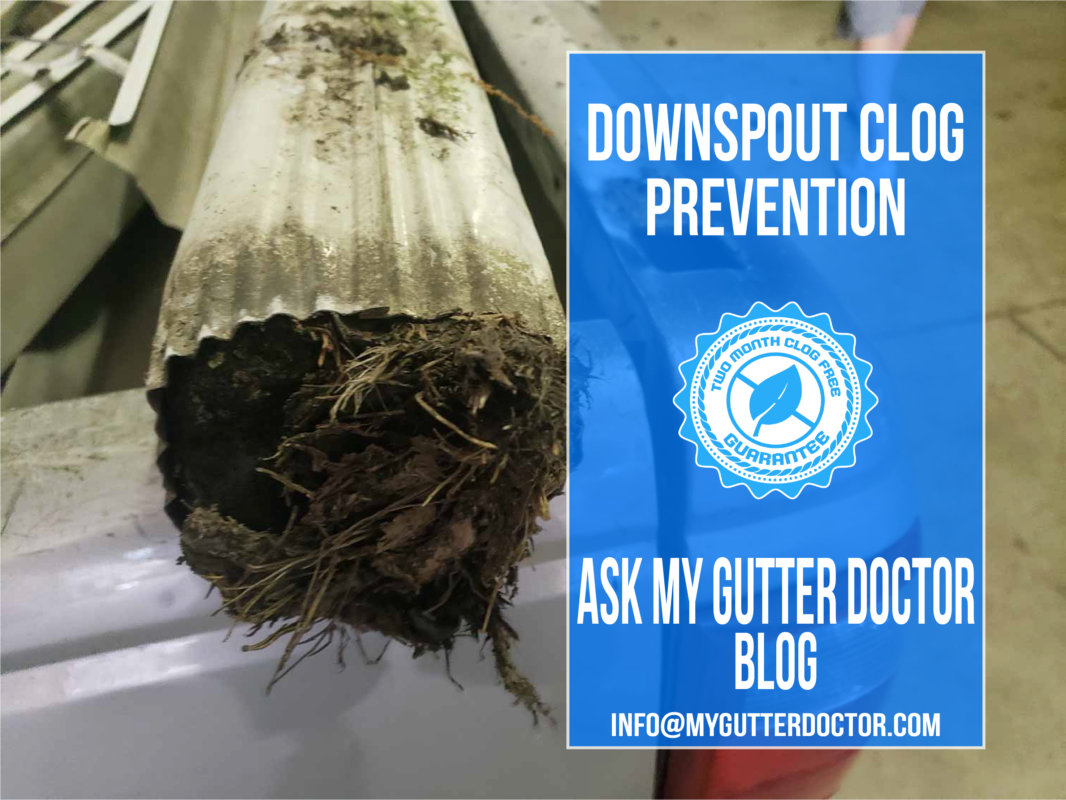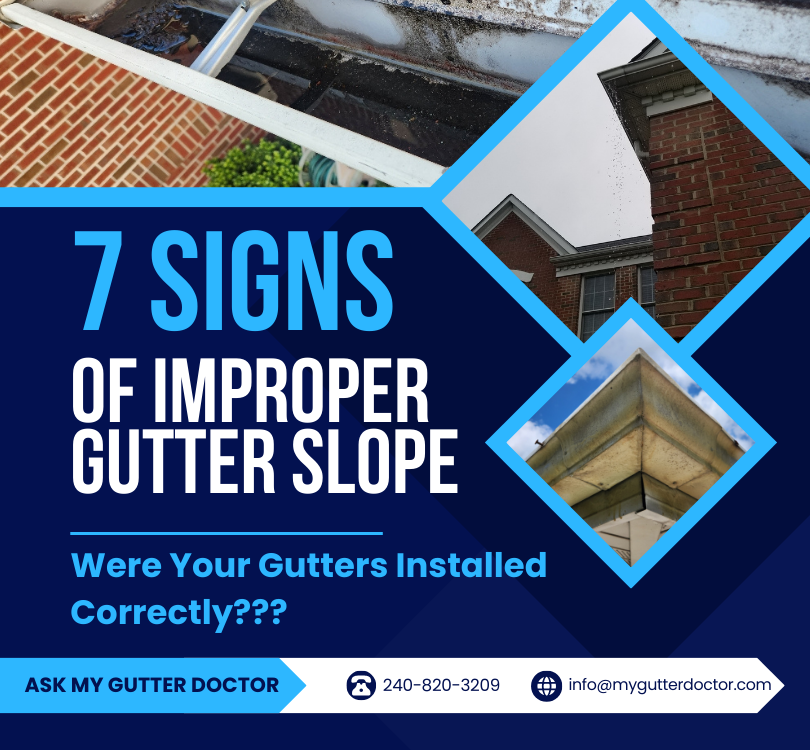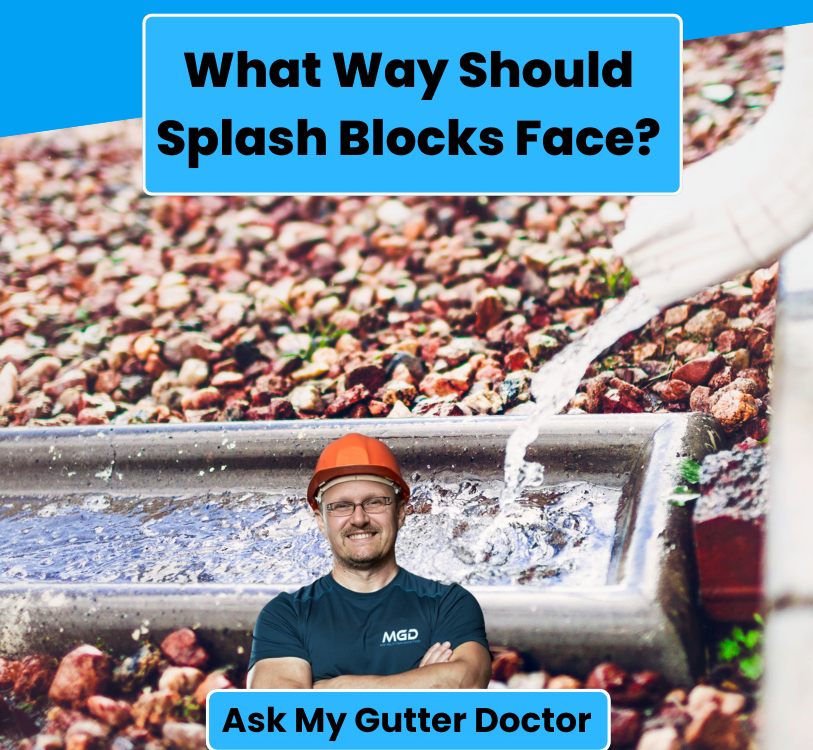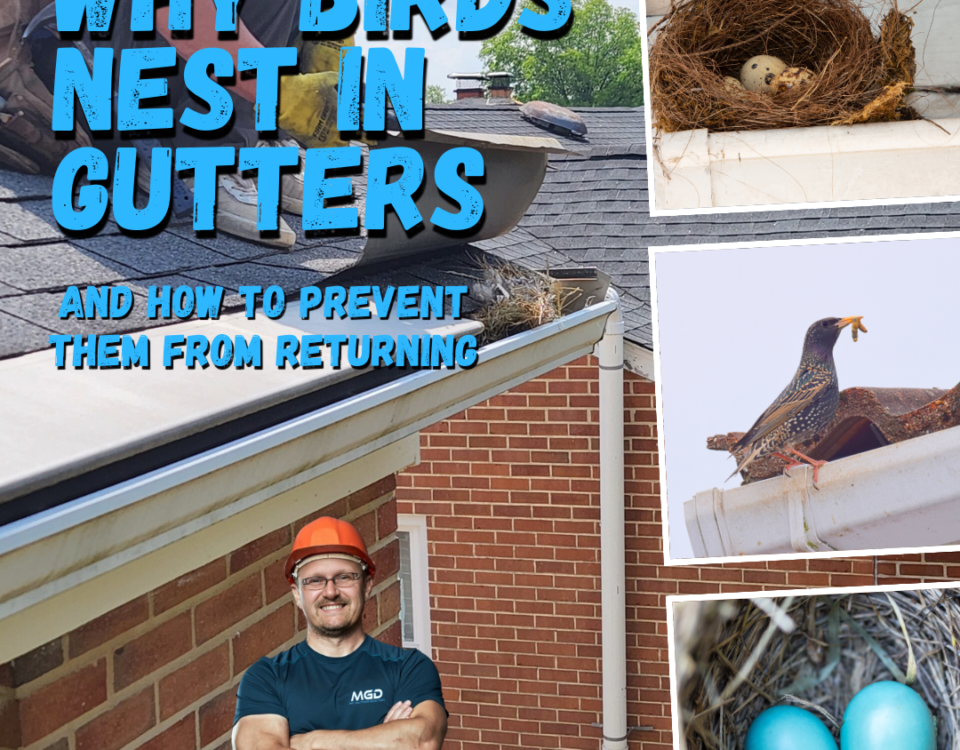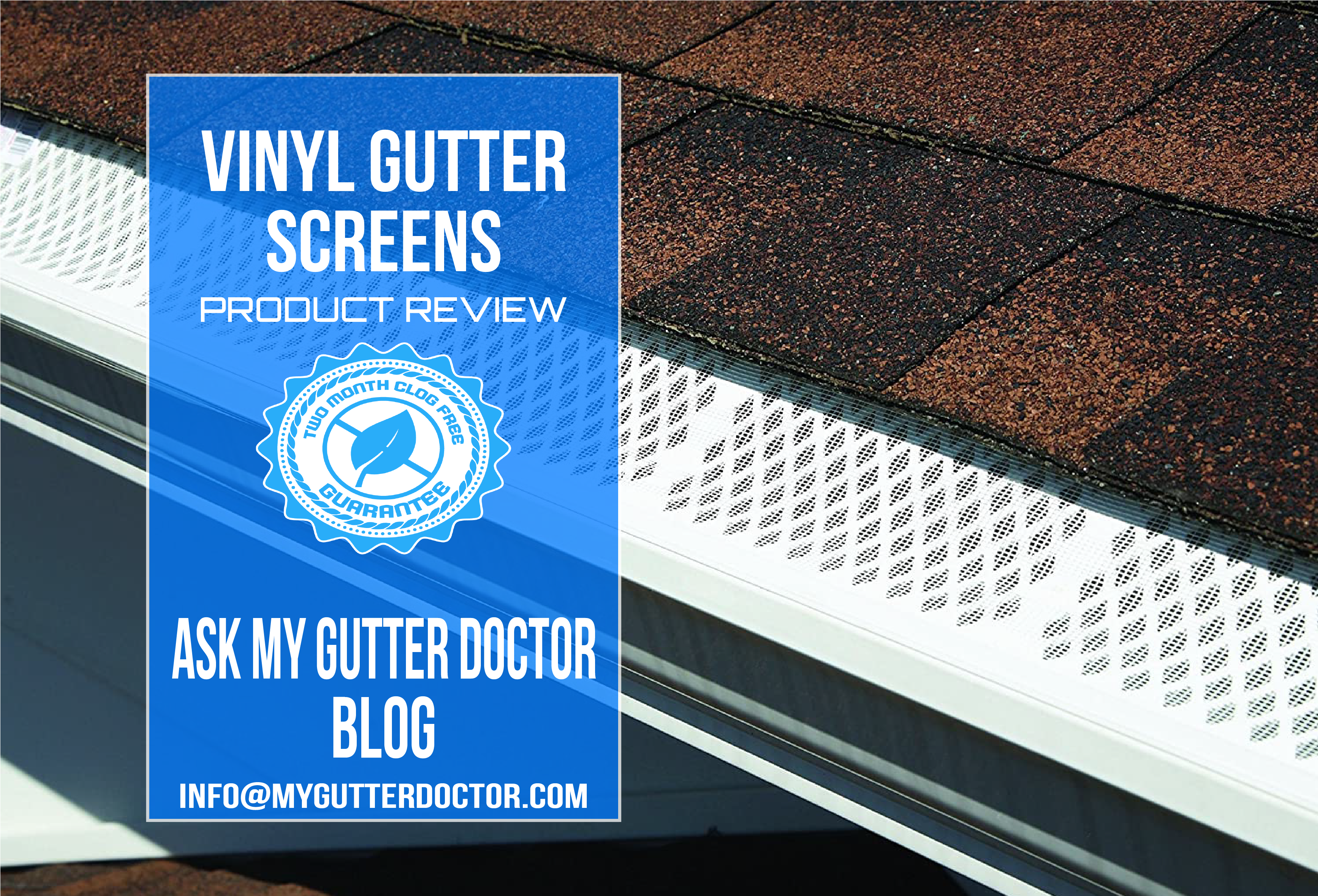
Vinyl Gutter Screens : Product Review
December 27, 2022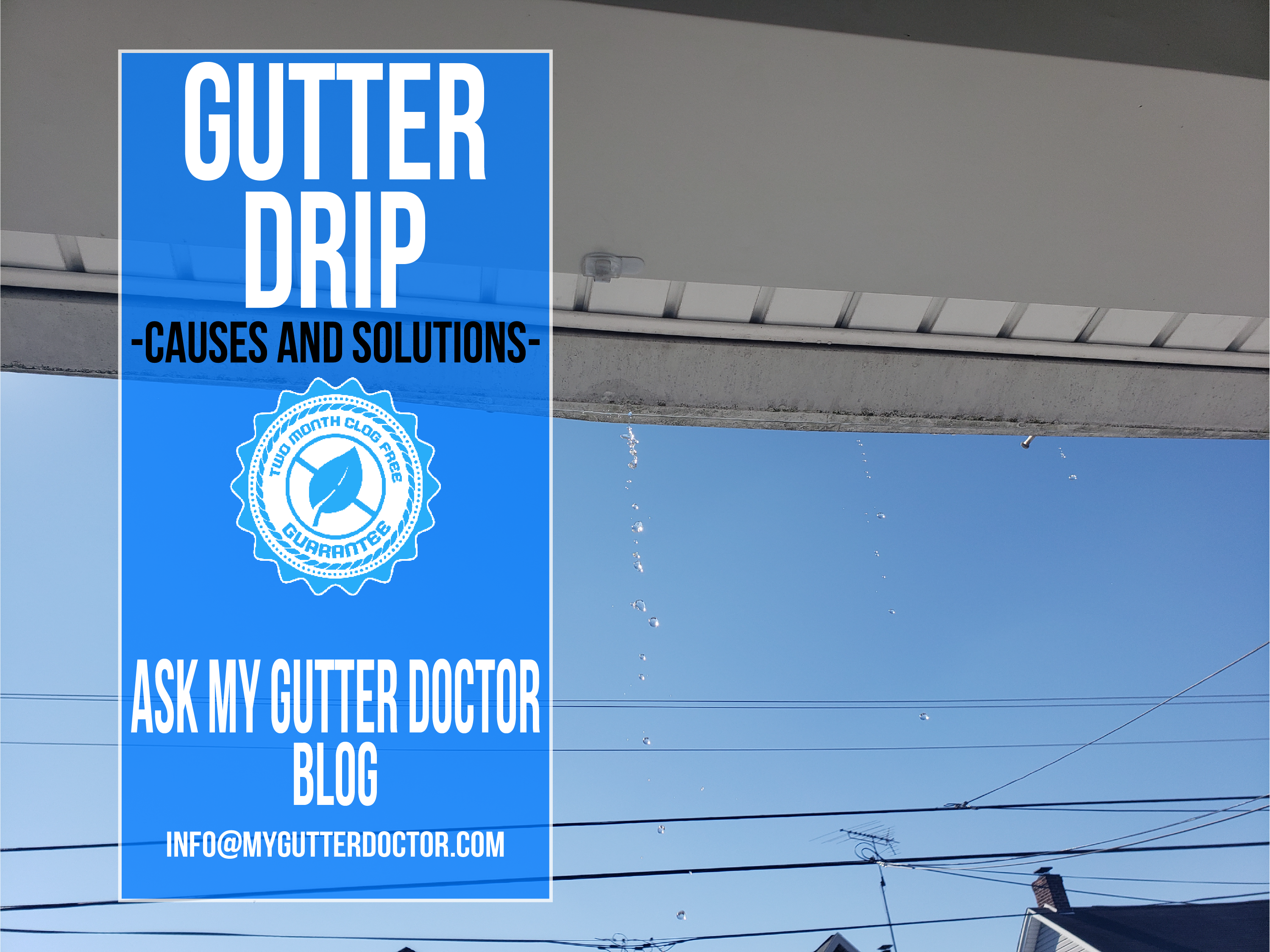
Gutter Drip
December 29, 2022DOWNSPOUT CLOG PREVENTION
There are a few different methods of Downspout Clog Prevention but not all of them are created equal. In this article My Gutter Doctor explains the different methods of Downspout Clog Prevention, the pro’s and con’s of each, and what you can do to stay ahead of downspout clogs going forward.
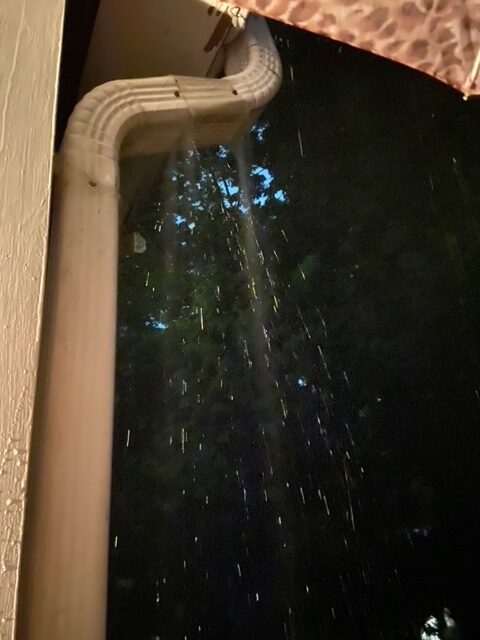
WHAT IS A DOWNSPOUT CLOG OR CLOGGED DOWNSPOUT?
Leaves and other debris become lodged in the downspouts and form a blockage as more and more debris collects around the same area. Eventually water flow is obstructed or blocked which is when the downspout officially becomes clogged.
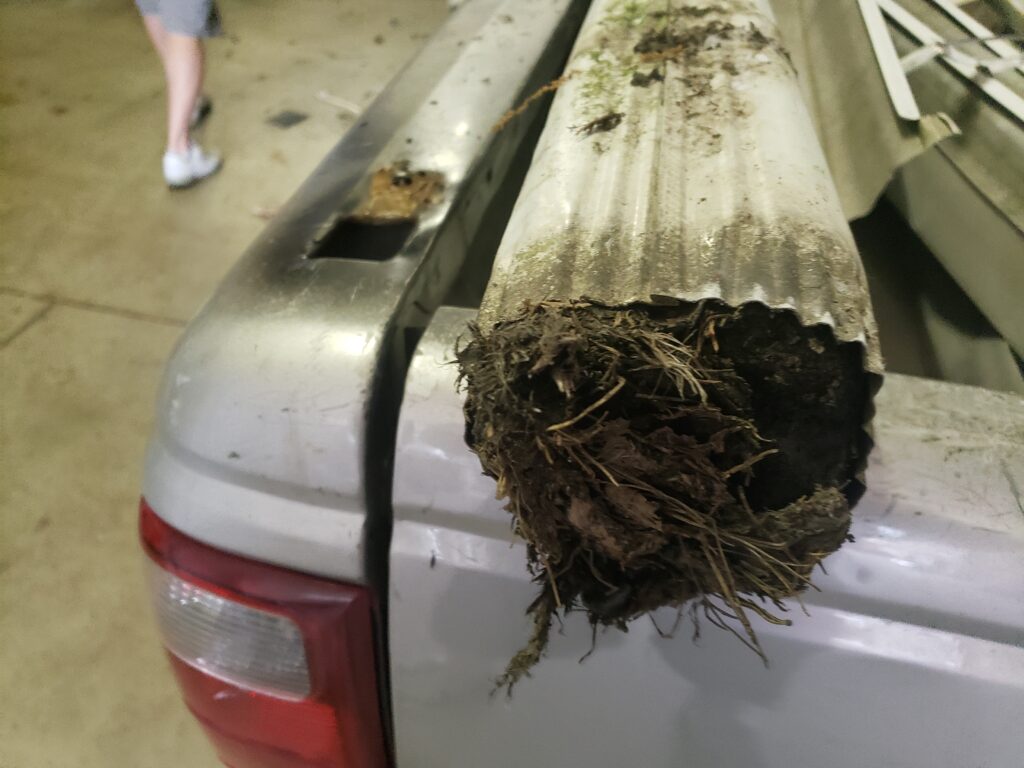
Every Spring and Fall season trees drop their leaves and other debris which ends up on your home’s roof and eventually into the gutter system. Homes with a lot of trees near the house will end up with excessive leaves on the roof that eventually make it into the gutters. Unfortunately the leaves lead to downspout clogs that will need to frequently be serviced to ensure more expensive damages don’t occur.
-CHECK OUT THIS SHORT 11 SECOND VIDEO OF WATER LEAKING FROM A CLOGGED DOWNSPOUT-
WHY IS IT IMPORTANT TO PREVENT CLOGGED DOWNSPOUTS?
The leading factor to all damages associated with the gutter system is clogged downspouts. Common gutter repairs such as gutters or downspouts coming loose, gutters going out of pitch, or even fascia board rot are usually directly related to clogged downspouts.
Water that is not able to drain properly through downspouts fills up the gutters until the gutters overflow. The problem with this is that the water is very heavy which causes strain and pulls the gutters or fascia boards loose from the home.
METHODS OF DOWNSPOUT CLOG PREVENTION
-
DOWNSPOUT STRAINER
-
DOWNSPOUT WEDGE
-
INLINE DOWNSPOUT FILTER
-
GUTTER COVERS/GUTTER GUARDS/LEAF PROTECTION
-
SEASONAL GUTTER CLEANINGS
DOWNSPOUT STRAINER
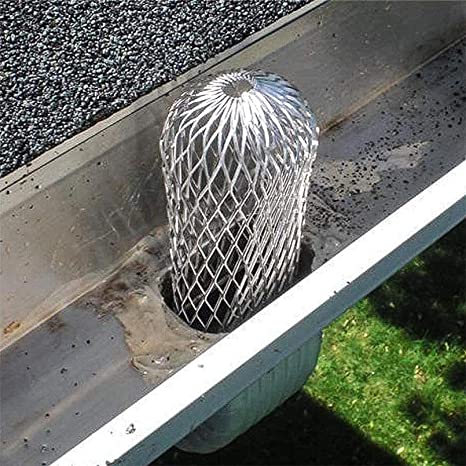
Downspout Strainers go by many names such as downspout ball, leaf strainer, or wire strainer. All of them are essentially a wire or screen ball that inserts into the gutter outlet to block leaves from going into the gutter system.
In the photo above you will see a classic downspout strainer inserted into the opening in the gutter that leads to the downspout. This opening is called the gutter outlet or downspout outlet. Downspout strainers are basically a wire filter for the gutter outlet opening.
DOWNSPOUT STRAINER : PRO’S
Affordability, Easy Installation, and Availability are the top 3 reasons strainers are so popular. They are readily available at your local Lowes or Home Depot and also the cheapest of all the options. In addition they can be easily installed by anyone that can climb a ladder high enough to reach the gutters.
DOWNSPOUT STRAINER : CON’S
Strainers are the most problematic method overall because leaves easily wrap around them which blocks the water from draining. Once the leaves wrap around the strainer the gutters fill with water and overflow from not being able to drain. Even smaller debris that would normally flush through is stuck in the gutters.
The main reason downspout strainers are not a good method of downspout clog prevention is that most of the time you end up needing to clean the gutters out more often than if there was no type of leaf protection whatsoever. Since practically nothing gets through debris immediately piles up around the strainers.
Homeowners that are able to clean their own gutters out may not mind having to frequently service their gutters. However for homeowners that need to hire companies to clean their gutters out, this can become quite expensive. Therefore if you are not able to clean your own gutters out, having downspout strainers will cost more in the long run that just leaving the downspouts open.
DOWNSPOUT WEDGE
The downspout wedge is basically the modern day evolution of the downspout strainer. Every year things are re-designed to be more efficient than the previous prototype. Thus, this is where the evolution of downspout outlet covers has progressed to.
The new and improved design features a rigid plastic frame that is built to last for a long time. In addition they added a slant feature and tripled the surface area.
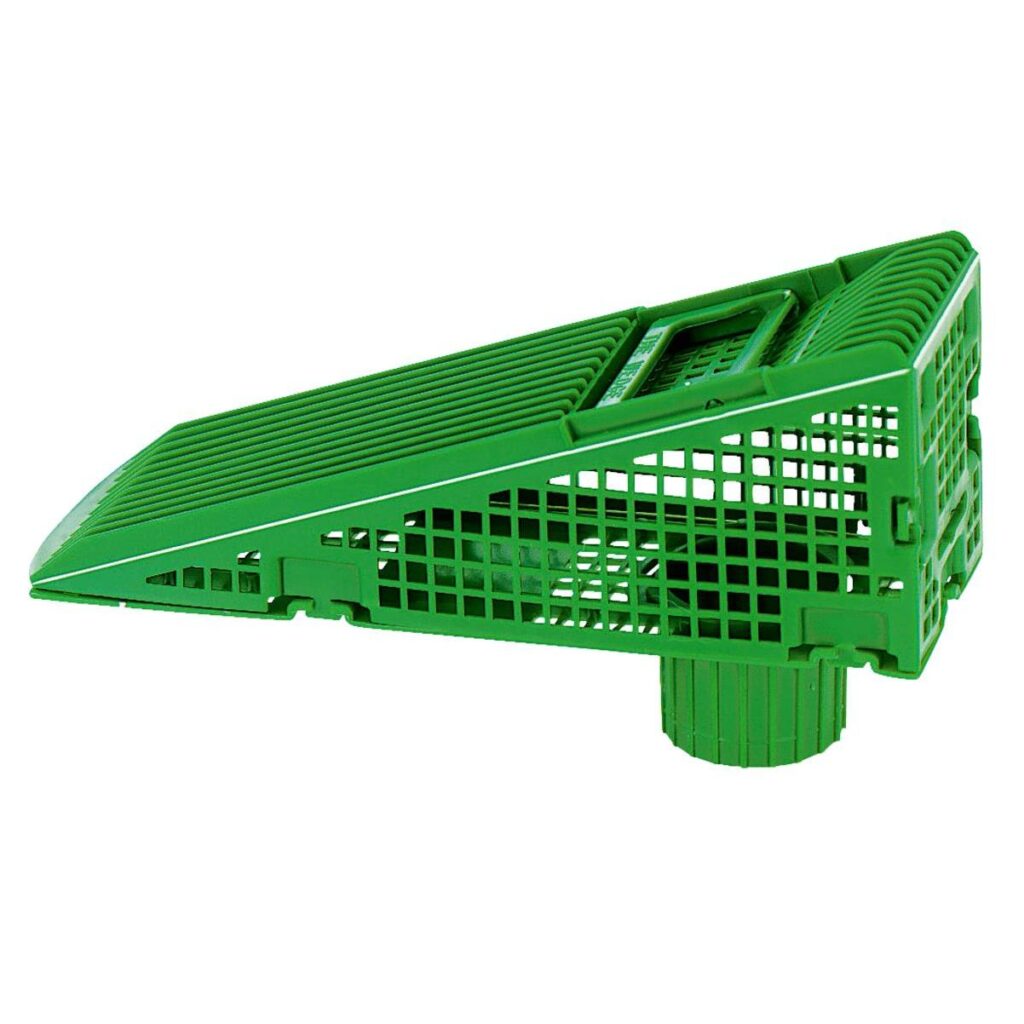
DOWNSPOUT WEDGE : PRO’S
The major downfall of downspout strainers was that leaves would wrap around them easily and form clogs. Fortunately wedges feature much larger surface areas. Therefore it will take more than just a couple leaves to block the water from draining. Another improvement to this plastic design is that that are slanted away from the downspout. The slant feature is designed to prevent debris from laying directly over the drain cover.
These heavy duty plastic wedges are easily available online and just as easy to install as downspout strainers. Since they are 3d printed they are also very affordable.
DOWNSPOUT WEDGE : CON’S
Despite the new and improved design characteristics, debris still piles up around these since it is not able to drain. Including smaller debris that would normally flush through the system. Over time you will need to have your gutters cleaned more often with gutter wedges than if you didn’t have them at all.
INLINE DOWNSPOUT FILTER
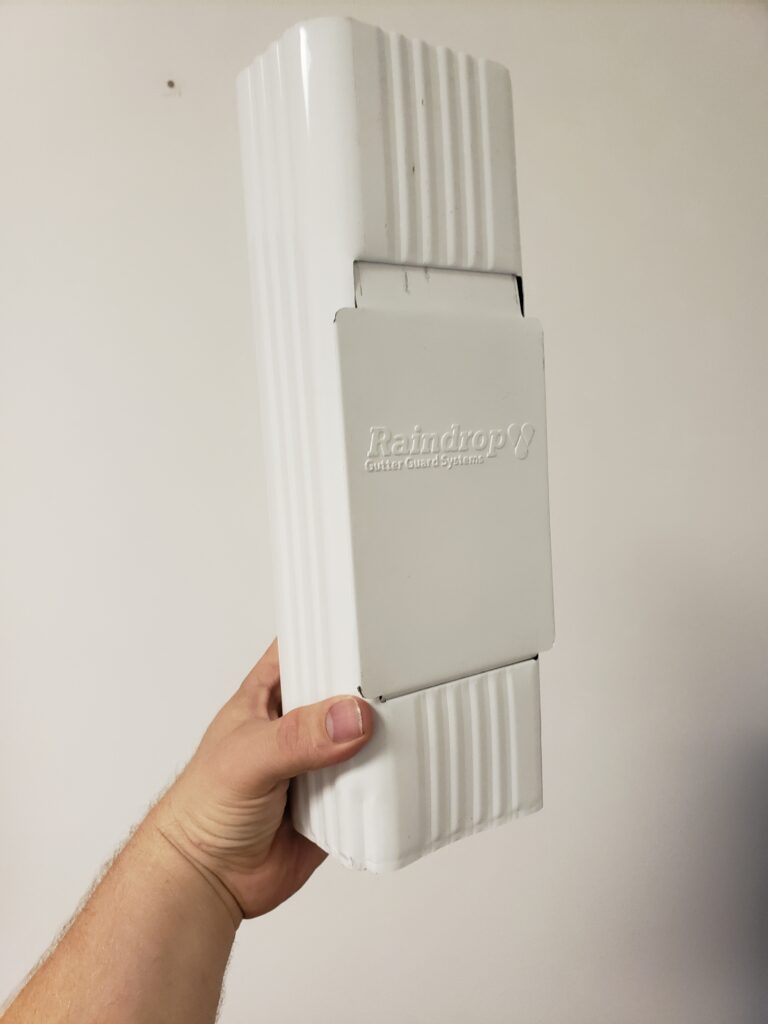
In the photo above you see an example of a Downspout Filter that gets installed to downspouts. The idea behind these is that the debris comes down the downspout and gets caught in the trap. Homeowners are able to open the trap door and manually removed the debris.
To install downspout filters properly a section of downspout will need to be cut out and removed. The in line filter connects the two downspout pieces back together.
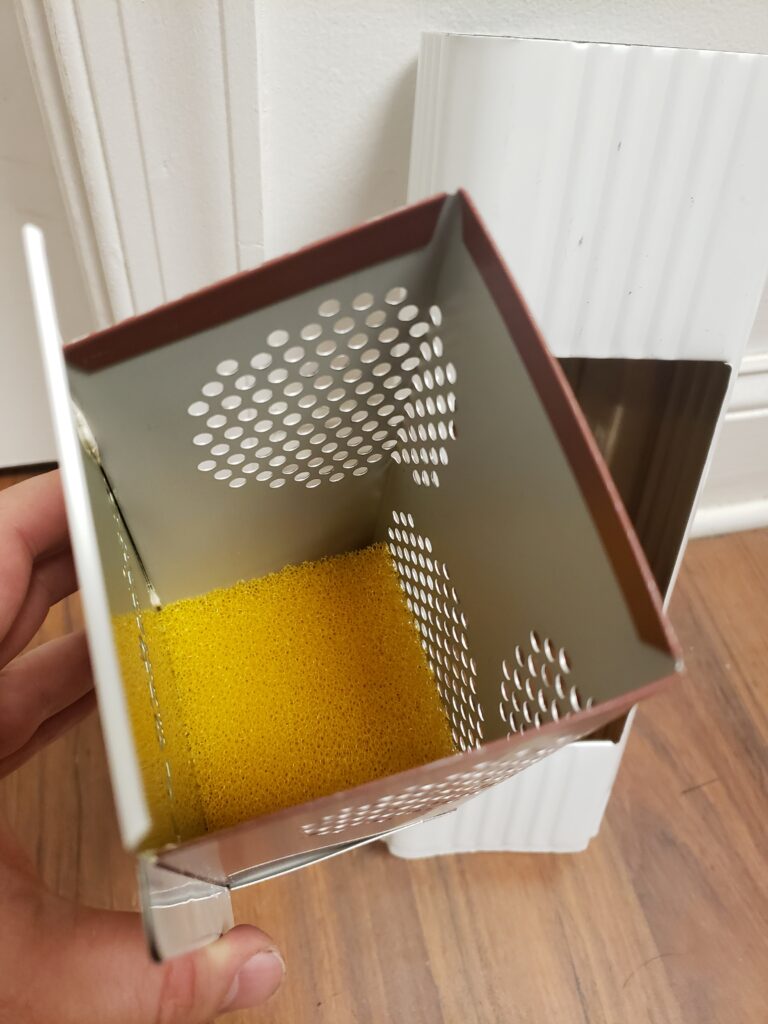
DOWNSPOUT FILTER : PRO’S
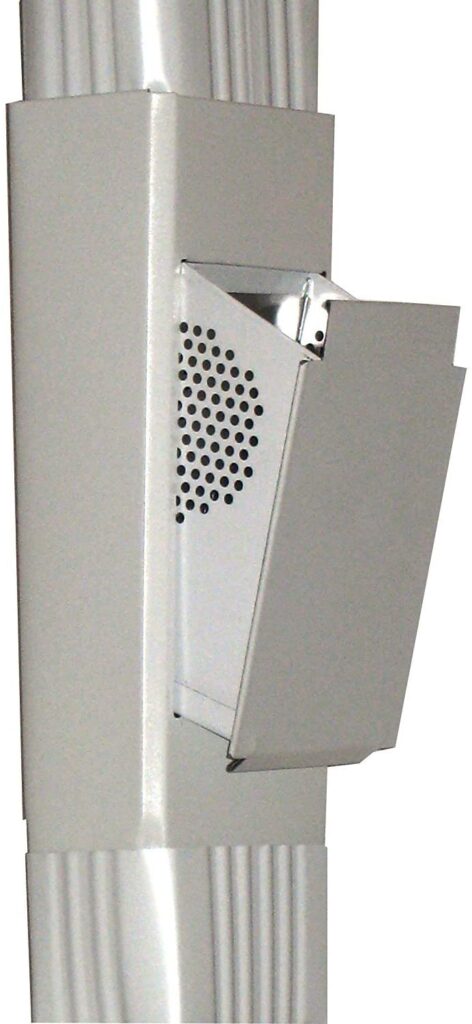
These are popular because they make it possible for homeowners to clean the debris from their downspouts without having to climb a ladder. Since homeowners are able to clean the debris themselves then theoretically they won’t need to hire anybody to clean their gutters.
DOWNSPOUT FILTER : CON’S
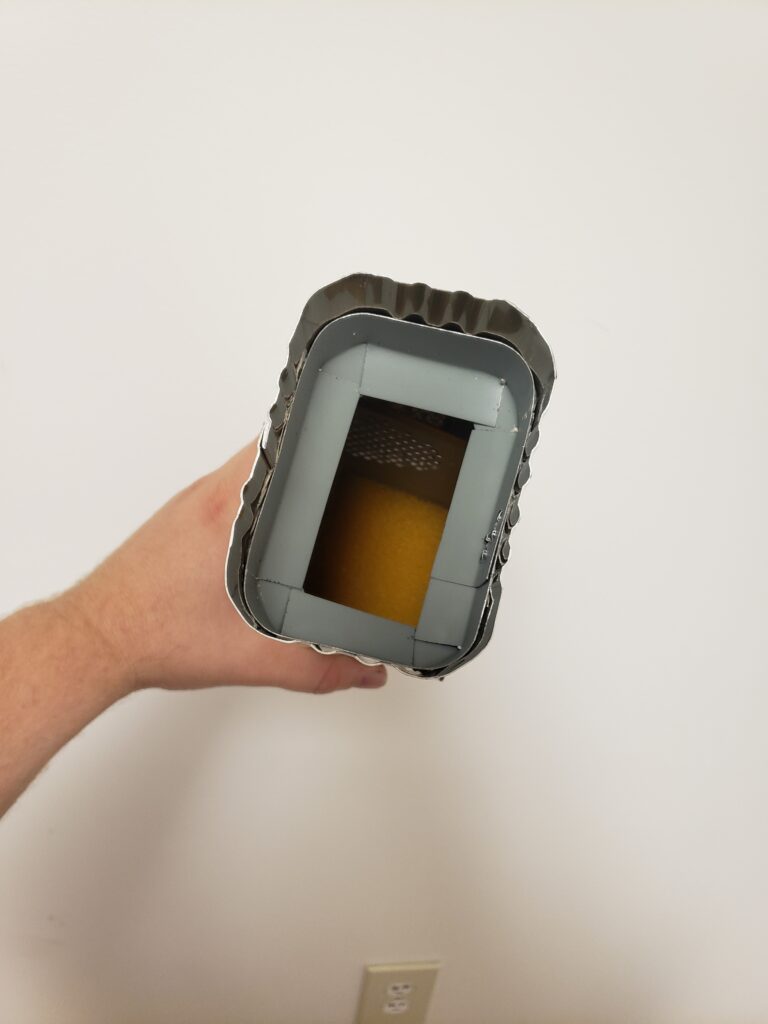
In the photo above you see an inside shot of a downspout filter from above. This brand of filter comes with a sponge at the bottom
When examining the photo you may have noticed that the frame that holds the trap/filter makes the hole smaller inside the downspout. This is a major design flaw because it causes clogs to occur before the trap. What happens is the clog start to form at this congestion point and packs together inside the next section of downspout above this one. If the debris jams above the filter than customer won’t be able to manually remove the debris without taking the entire downspout apart.
Another con to these is how often homeowners will need to manually remove the debris from them. Homeowners with many trees close by will need to check downspout filters every couple weeks and keep them cleaned out. If you allow the debris to jam pack in the downspout above the filter than it risks splitting the downspout seams open.
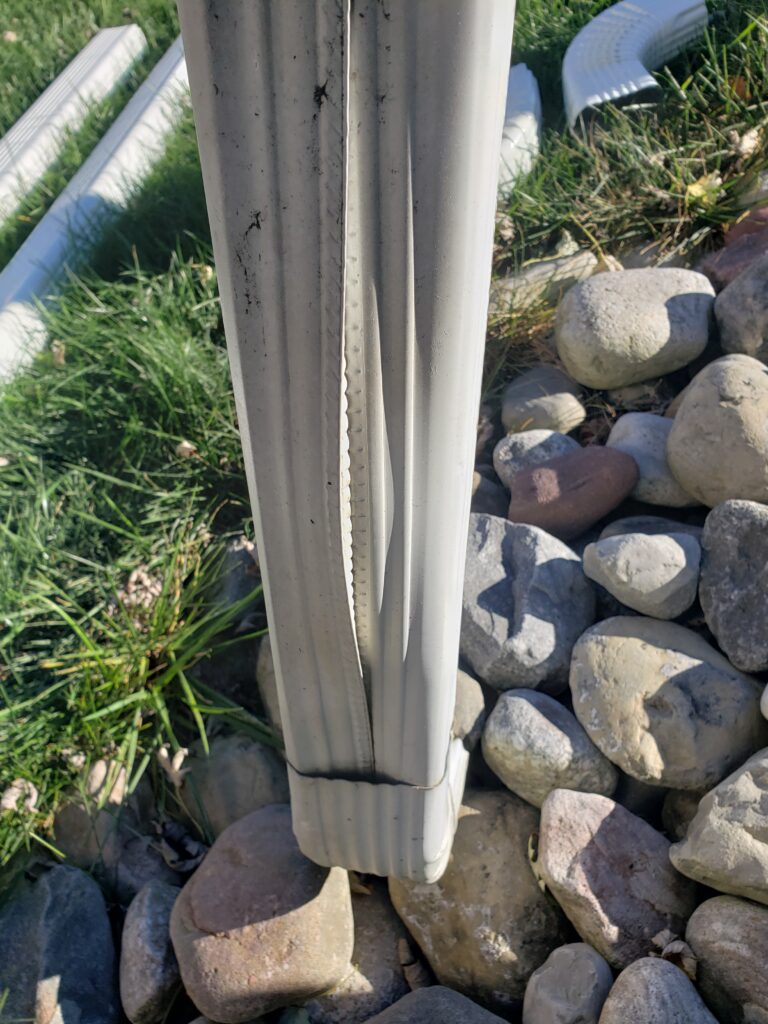
GUTTER COVERS/GUTTER GUARDS/LEAF PROTECTION
The most effective method of downspout clog prevention is having quality gutter covers installed to your gutter system. Gutter covers mount to the tops of the gutters with the purpose of keeping leaves and other debris out of the gutter system.
It should be noted that some styles of gutter guards are more effective than others. We exclusively use and recommend perforated aluminum gutter covers for a multitude of reasons such as durability, effectiveness, efficiency, and price point.
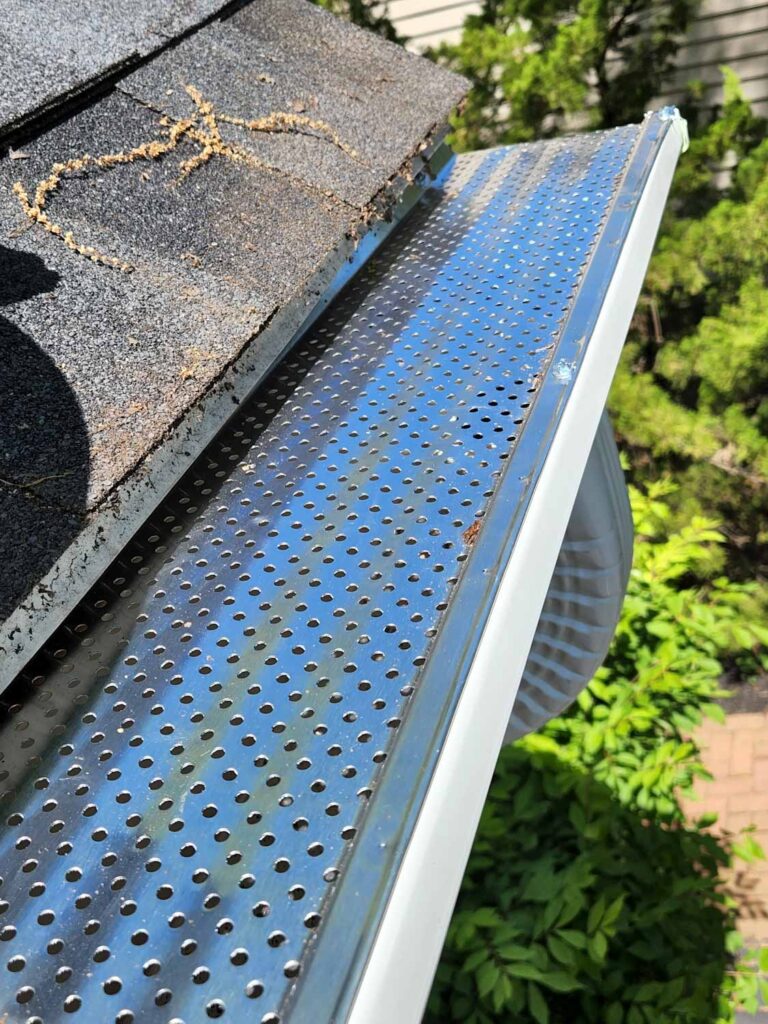
GUTTER COVER : PRO’S
The idea behind gutter guards is to prevent debris from being able to enter the gutter system and cause clogs. Since effective gutter guards, such as perforated aluminum, prevent all debris from entering the system, downspout clogs will never happen again once installed.
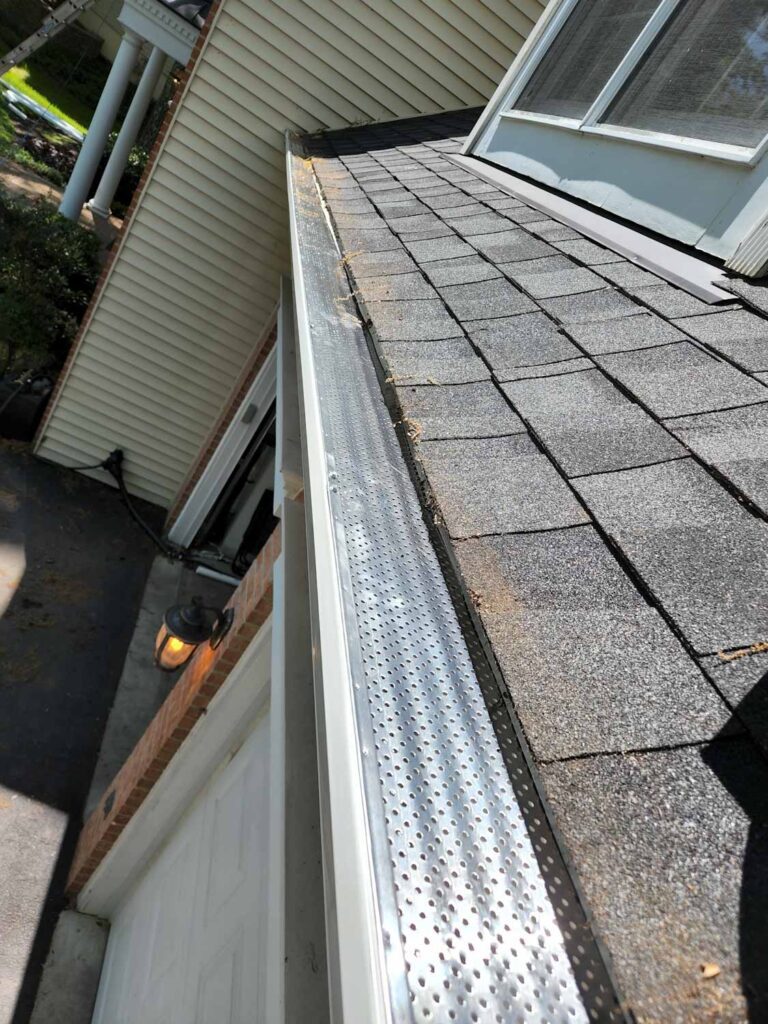
GUTTER COVER : CON’S
Overall cost is a major deciding factor when it comes to gutter covers. Especially the more expensive big name box brands that are about triple the cost of perforated aluminum.
Cheaper styles of gutter covers, like vinyl or plastic covers, can be more problematic than good. Plastic gutter covers come loose which creates gaps debris is able to get through. If you are thinking about leaf protection, be sure to do some research into the product you are considering.
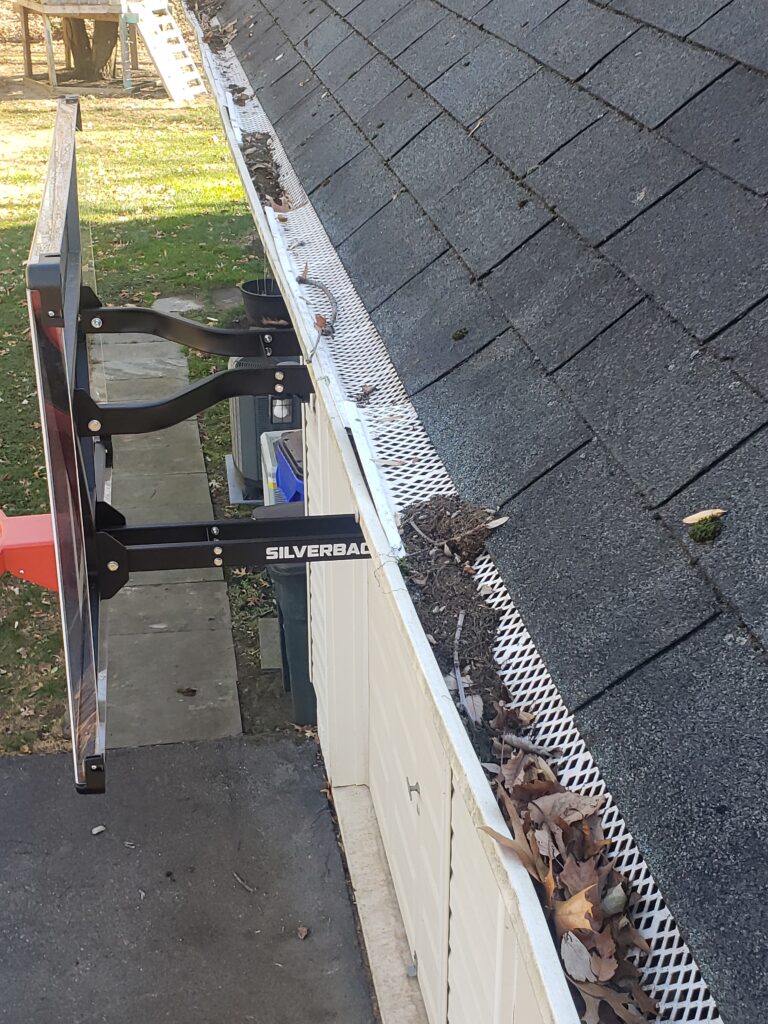
Another Con and common misconception is that homeowners think gutter covers are maintenance free once they are installed. Some companies mislead customers into thinking they’ll never have to worry about their gutters or roof debris accumulation again once covers are installed. Unfortunately that is false for some homes. Most gutter covers are designed so that the leaves are able to blow off once dry. However some homes will have problem areas, such as interior corners, where debris may pile up and need to be removed manually every so often.
SEASONAL GUTTER CLEANINGS
Sometimes the most cost efficient method for downspout clog prevention is to have the gutters (and downspouts) cleaned after the spring and fall seasons. Scheduling routine gutter cleanings (or cleaning them yourself) soon after the spring and fall seasons are over are the optimal times for gutter cleanings. For larger homes the cost of gutter cover installation can be in the thousands of dollars. Therefore it is often more cost efficient to clean the debris as needed.
GUTTER CLEANING : PRO’S
The idea is to clean the gutters soon after the majority of the tree leaves have fallen in the fall or in the spring. That way you know the gutters are clear for 5-6 months until the next leaf season. For homes that only require one cleaning per year than scheduling your cleaning service for mid to late fall every years is the optimal choice.
GUTTER CLEANING : CON’S
Cost. If you live in a larger sized home or a home that has a lot of trees around, then you may be familiar with the cost of gutter cleaning services. Furthermore it may be time to consider the cost of gutter covers.
CONCLUSION
The best overall method of Downspout Clog Prevention is quality gutter cover installation such as perforated aluminum covers. Especially for homes that have too many trees that are just too close to the home.
Downspout strainers, wedges, or filters are all problematic unless the homeowner is able to persistently keep up with the debris accumulation. If the leaf piles are left un-tamed they will clog the downspouts in these areas.
NOW ON INSTAGRAM AND FACEBOOK
To check out high definition photos of our work please visit our INSTAGRAM or FACEBOOK pages. Unfortunately web page load speeds have not caught up with the size of today’s high resolution images. After more than a couple photos on one page, the page begins to load too slow.
Therefore we started uploading our recent job photos to Instagram and Facebook since they are both great resources for infinite photo storage with no loss of image quality.
Feel free to give us a follow on either app to keep an eye out for coupons and promotional offers.
CHECK OUT OTHER ARTICLES BY MY GUTTER DOCTOR
Gutters Leaking From Behind by My Gutter Doctor
Why Birds Nest In Gutters by My Gutter Doctor
Is Spring Gutter Cleaning Necessary by My Gutter Doctor
Bees In Fascia Boards by My Gutter Doctor
Gutter Replacement by My Gutter Doctor
When to Clean Gutters In Fall by My Gutter Doctor
Gutters Leaking At Seams by My Gutter Doctor
Fascia Board Replacement by My Gutter Doctor
Loose Gutter Spikes by My Gutter Doctor
Vinyl Gutter Screen : Product Review by My Gutter Doctor
Gutter Drip by My Gutter Doctor
NEW LOCATION
93 Monocacy Blvd. A-6
Frederick, MD 21701
301-820-3209
CHECK OUT WHAT OTHER EXPERTS ARE ALSO SAYING
3 Ways To Prevent Clogged Downspouts by Rainman Rain Gutters
How To Clean Downspouts by Golden Hammer Gutters
Gutters That Don’t Clog – 5 Tips To Clog Prevention by Weatherguard Gutters
Keeping Your Gutters Flowing Free by The Natural Handyman
How To Prevent Your Downspout From Clogging by Gillece
The Truth About Clog Free Gutters by Bob Villa


